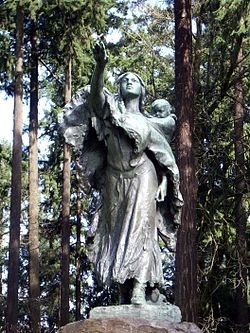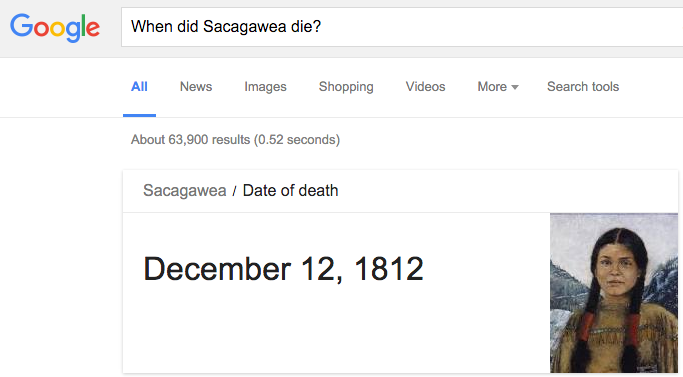 [Please note that the reading assignments for next Thursday, which you will need to do in order to answer the questions below, are listed on the schedule. The schedule is where you will always be able to find the complete list of what you are required to read each week.]
[Please note that the reading assignments for next Thursday, which you will need to do in order to answer the questions below, are listed on the schedule. The schedule is where you will always be able to find the complete list of what you are required to read each week.]
To whet your appetite for this week’s reading assignments, you might want to check out the U.S Mint’s page on its Sacagawea dollar gold coin. It includes a brief description of Sacagawea’s role in history that you might want to compare with some of the information you find in the assigned readings.
As you read the assigned texts, here are some questions that will help you focus on the important parts of the readings and prepare for our discussion next Thursday. It is important to think about all of the questions, but you must also select one of these prompts and write a brief response of around 300-500 words (or one single-spaced page) in your Google Doc by 11:59 p.m. on Wednesday.
- Using evidence provided in the assigned articles, construct a persuasive answer to the following question: Given the relatively small number of times that Sacagawea is mentioned in the journals of Lewis and Clark, why did she become so famous?
- If Donna Barbie is right that “Sacagawea’s proponents fashioned an idealized woman, according to their own definition” (Barbie, p. 60), then historians might be able to use stories about Sacagawea to understand how different Americans in the past defined the “ideal woman.” Drawing on your readings for this week, select one or two stories or legends about Sacagawea and analyze what they reveal about definitions of the “idealized woman” at the time when these stories or legends were popularized.
- Based on the historical record discussed in these articles, what word or phrase would you use to best describe Sacagawea’s role in the Lewis and Clark expedition? Was she primarily a guide, an interpreter, an intermediary, the wife of a hired member of the expedition, a useful symbol of peaceful intentions, some combination of these roles, or some other role entirely?
- There are two different theories about when Sacagawea died, both of which are discussed most fully in the Thomas P. Slaughter article. Which of these theories do you find most convincing, and why?
- After reading Scott Casper’s article on the American National Biography, do you agree with the editors of the ANB, quoted on pp. 452 and 453, that it is important for a nation to have a “national biography”–a compendium of the nation’s important figures?
- Do the differences between the Dictionary of American Biography and the American National Biography, as summarized by Casper, reveal larger changes in the way that American historians think about the nation and the past? What are some of these changes?
Some optional resources you might find interesting:
Many of this week’s readings make reference to the Journals of Lewis and Clark, which happen to be available online. If you are interested, you can even use the names index to the online edition to browse quickly through all of the pages that mention Sacagawea, either in the original text or in the editors’ footnotes.
The assigned readings also mention an historical novel by Eva Emery Dye, called The Conquest (1902), that contributed to the rise of Sacagawea’s fame in the twentieth century. That novel is also available online through Google Books, and if you are interested, you can easily click through to some of the sections that talk about Sacagawea.
Image credit: “Sacagawea,” sculpted by Alice Cooper, in Portland, Oregon; available on the Wikipedia entry on Sacagawea, which contains a list of other statues of Sacagawea around the country.



 [Please note that the
[Please note that the